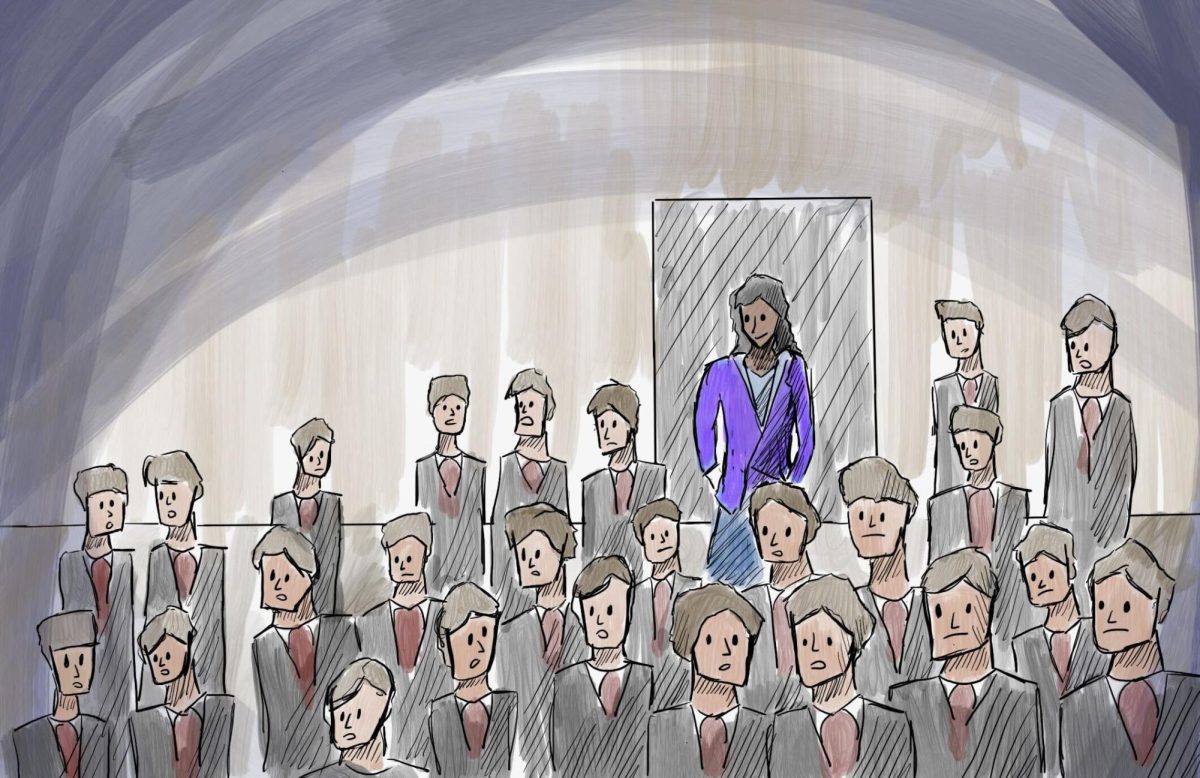While as of Fall 2024 the college employs more women than men, there are still gains to be made in representation and support of Black, Latino, Asian and Indigenous faculty members.
The college employs more women than men by a narrow margin — as of Fall 2023, 50.1% of employees were women compared to 48.8% of men. Approximately 80% of the faculty at the college are white. According to data from the same report by the Office of Analytics and Research, only 16.2% of faculty are people of color and 2% of faculty were reported as “unknown” while 1% was reported as “international.”
Breaking down this figure: 0.1% of faculty are Native Hawaiian or other Pacific Islander; 0.4% of faculty are Native American; 2.1% are Asian; 6% are Hispanic or Latino; 5.1% are Black and 2.4% identified as two or more races. What this points to is an overall lack of racial diversity within the college’s employees, which is on par with national averages.
This statistical difference is slightly larger in scale than the student breakdown by race as of Fall 2023: the student population is 73.6% white and 21.7% students of color. As of Oct. 10, data is not yet available for Fall 2024. This data also does not break down faculty into schools or disciplines, so it is difficult to see the differences across departments.
Across the college’s classrooms, this means that most of the teachers are white, as are most of the students. Although the college now employs more women than men, most of those women are white. Recent changes in the gender disparity across the college should be celebrated — but this does not necessarily mean that the environment for female faculty has improved. Nationally, female faculty are often held to a different standard than their male peers.
It is often more difficult for women and people of color to hold tenure track positions, although they are being hired more frequently. Issues of turnover and retention at the institution are also of high concern based on the Campus Climate survey from Spring 2024. Significant differences in the comfortability of staff and faculty based on position and race were reported — only 12% of respondents of color said they were “very comfortable” on campus. Faculty and staff respondents of color were overall less comfortable with the campus climate than their white counterparts, with 7% stating that they felt “very uncomfortable” and 15% saying they felt “uncomfortable.” In comparison, 14% of white faculty reported some degree of discomfort. Faculty and staff workplace climates were also listed as areas of improvement for the college.
Students who do not fit into hegemonic identity categories — white, male, able-bodied and neurotypical — can also often feel misrepresented in higher education. This also forces other faculty to fit into a standard of exceptionality and excellence that may not be extended to their peers. This is an unfair standard that has been enforced across many job fields — but the campus community can combat this by being cognizant of structural inequities and their own personal biases.
Improving the on-campus climate for women, professors of color and other disadvantaged groups is an essential step that must be taken in order to make the experiences better for all members of the campus community.
Representation in education is one of the ways that students can dream to achieve excellence. If they do not see themselves represented in their teachers, they may not believe that being in a similar position is possible. This does a disservice to all students because it enforces a similarity of opinion, pedagogy and position. The disparity between genders has improved over the past years at the college, but men still outnumber women in higher level positions nationally.
Based on the same report, full-time male employees outnumbered full-time female employees by a count of 36 people. Part-time employees included 188 women and 134 men. Non-binary or genderqueer faculty were not represented in this breakdown of designated positions — 0.7% of employees identify outside of the gender binary, which is an increase from previous years.
The disconnect between the student body’s demographics and the college’s faculty exposes a disparity that is endemic in higher education. The college could take action to improve on its own campus by acknowledging the systemic differences that make these positions more difficult to achieve. The campus community should celebrate the achievement that the college is hiring more women and also acknowledge that this is just a step in the right direction. The structure of the institution itself can often uphold inequity and create a legacy of discrimination, even if the overall attitude at the institution is positive or improving. The college must make an effort to create safety nets for its diverse faculty through job security and competitive benefits.















